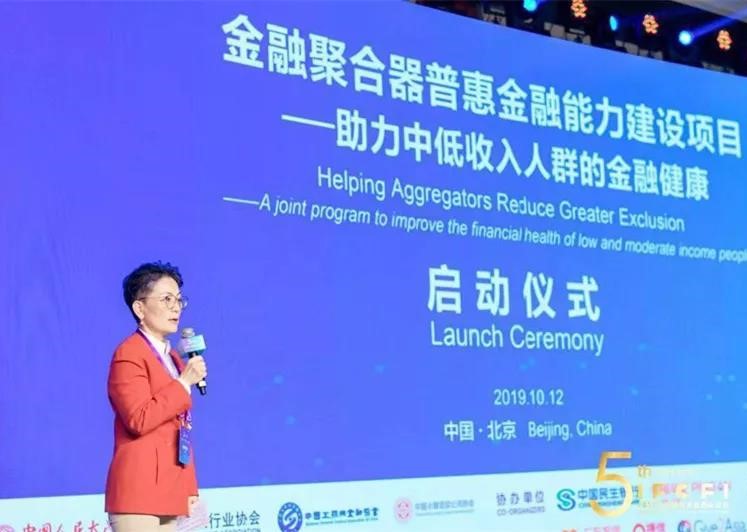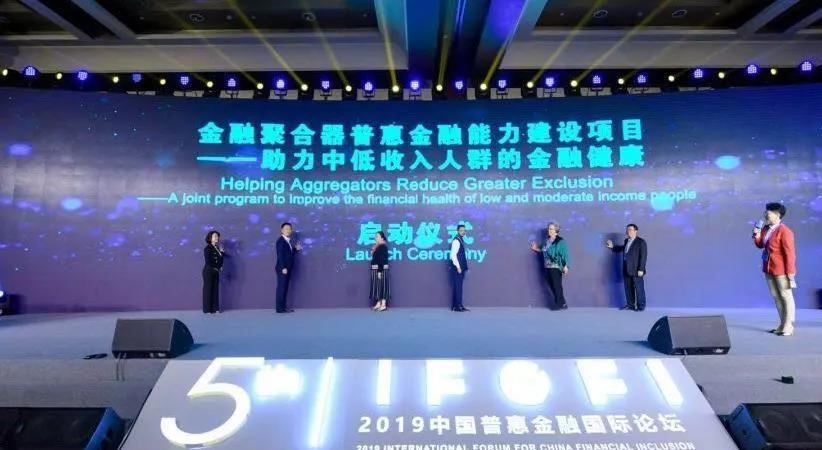The past 5 years has seen remarkable achievements of digital financial services in China, but with all the development of digital technology, the low-and moderate-income groups yet to have full access to financial services. In particular, there is still much room for improvement of their financial health.

Presided by Mei Lu, Senior Advisor of CAFI
In order to find a way to improve the financial health of low- and moderate-income people and eventually a solution that works both for China and the rest of the world, Chinese Academy of Financial Inclusion at Renmin University of China (CAFI), with the support of the Metlife Foundation (MLF) and Give2Aisa(G2A), cooperated with Meituan and CreditEase and launched the program "Helping Aggregators Reduce Greater Exclusion". Based on the research on farmers and food-delivery riders, this program seeks for feasible methods through multiple trials and errors in an attempt to find out what’s troubling the financial health of low-and moderate-income groups in China. Based on problems found, it will customize portfolio of digital financial services for customers, such as savings, insurance, credit, etc. This serves the goal of improving the financial health of low- and moderate-income people with the help of financial aggregators and of figuring out universally recognized solutions to financial health.
On October 12, to further highlight the financial concept of "inclusive, healthy and responsible finance", the program (second phase) was launched as an important part of the 2019 IFCFI. The launch ceremony was presided by Mei Lu, Senior Advisor of CAFI, and participated by Xiugen Mo, Research Director of CAFI, Krishna Thacker, Director of Asia Region of MetLife Foundation, Carol Yang, China Chief Representative of G2A, Haitao Yin, Senior Director of Meituan Financial Services, Xiuling Xu, Senior Vice President of CreditEase, and Amolo Ng'weno, CEO of Bankable Frontier Associates (BFA).

The launch ceremony
According to the established goal, the program will develop a small APP that is interesting and easy to use and make it a standardized tool for low-and moderate-income people to assess the quality of financial health, to find problems and solutions and to get suggestions. Meanwhile, as the research yields results, the financial health of low-and moderate-income people in China and the rest of the world will be significantly improved.
It is stated in The World Development Report (WDR) 2019 that 2 billion people work at informal institutions around the world. What they have in common are unstable income and social security as well as low access to education. In 2017, official data showed that China has 776 million-strong employed population, of which 366 million were considered informally employed, such as riders, online farmers, etc. The beneficiaries of this program are exactly the low-and moderate-income groups, such as riders and farmers.
The financial aggregator is a concept newly introduced to the field of finance in recent years. It is used to connect the disadvantaged groups in the "last mile". In the previous research of the program, CAFI and BFA found that there are three types of financial aggregator models in China, namely "'last mile model", "risk-sharing model" and "workplace model". A great number of cases are found in those models. The traditional model of financial aggregator relies on the equipment or computers in sales outlets to connect financial service providers, financial aggregators and customers, but the new model enables customers to directly connect with financial service providers with their smartphones. Digital connectivity has changed the form of aggregation. On the one hand, the development of the digital market has largely changed the nature of work. The “the gig economy era” is witnessing more and more independent workers.
Meituan Dianping is a telling example. On this platform, there are 5.9 million registered merchants and 420 million yearly active users as well as nearly 600,000 daily active food-delivery riders. Meituan Dianping has become an aggregation of Internet eco-system and online employment eco-system. On the other hand, more and more farmers are connecting with the outside world with their smartphones, and more and more online platforms providing services for them, such as YiNongDai, Taobao, Jingdong, etc. These platforms have found that supply chain finance and e-commerce finance can effectively help farmers increase their income. Taking the CreditEase YiNongDai for example, it provides a platform of agricultural charity for philanthropists to help women in poverty-stricken or rural areas through traditional aggregators (such as local micro-credit companies, poverty alleviation associations, credit cooperatives, etc.)
Based on the cases of the three models, all the researches of the program will provide a reference for how to improve the financial health of all low-and moderate-income people in the gig economy era.